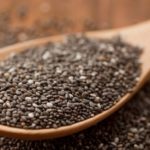Cải ngọt is a popular vegetable in Vietnamese cuisine due to its affordability, ease of cultivation, and nutritional benefits. It is also versatile and can be cooked in many delicious and healthy ways. Let’s explore the nutritional value and health benefits of cải ngọt, as well as tips on how to choose the best-quality cải ngọt for your meals.
1. Nutritional Value and Health Benefits of Cải Ngọt
Nutritional Value of Cải Ngọt
Cải ngọt contains various beneficial compounds such as proteins, albumin, cobalt, and more. The roots and leaves are particularly rich in alkaline substances, a type of water-soluble base that promotes digestion and enhances the absorption of albumin, thereby helping to prevent fatty liver disease.
 Cải ngọt is packed with nutrients
Cải ngọt is packed with nutrients
Despite its rich nutritional content, cải ngọt has a relatively low-calorie count, with approximately 50 kcal per 100g, making it a suitable choice for those on a weight loss journey.
Nutritional composition of 100g of cải ngọt includes:
- 1.1g of protein
- 0.2g of fat
- 2.1g of carbohydrates
- 61mg of calcium
- 37mg of phosphorus
- 0.5g of fiber
- 0.01mg of iron
- 0.02mg of carotene
- 0.04mg of vitamin B1
- 0.3mg of vitamin B2
- 20mg of vitamin C
Health Benefits of Cải Ngọt
1. Rich in Calcium and Good for Osteoporosis
Cải ngọt is an excellent source of calcium and vitamin K, which are essential for maintaining strong and healthy bones. Calcium helps to strengthen the skeletal system, while vitamin K increases mineral density, reducing the risk of fractures.
This makes cải ngọt particularly beneficial for older adults and children, who require higher amounts of calcium in their diets.
2. Heart-Healthy Benefits
The fiber, vitamins, and minerals found in cải ngọt work together to lower cholesterol levels, regulate blood sugar, and maintain a healthy weight. As a result, cải ngọt helps to protect against cardiovascular diseases such as heart attacks, high blood pressure, and fatty liver.
 Cải ngọt is good for heart health
Cải ngọt is good for heart health
3. Aids Digestion and Relieves Constipation
Cải ngọt is a good source of fiber and mucilage, which support digestive health. The fiber prevents constipation, while the mucilage stimulates intestinal motility, aiding in the elimination of waste and promoting a healthier digestive system. This can help prevent conditions like hemorrhoids and intestinal obstruction.
4. Boosts Immunity and Detoxifies the Body
The vitamins and minerals in cải ngọt enhance immunity and protect the body from various ailments. It also has cooling and detoxifying properties, making it an ideal vegetable to consume during hot summer days.
 Cải ngọt boosts immunity and detoxifies the body
Cải ngọt boosts immunity and detoxifies the body
5. Cancer Prevention
According to nutrition experts, cải ngọt contains allyl isothiocyanate, a compound that helps prevent and fight cancer. Regular consumption of cải ngọt may lower the risk of dangerous cancers, including colorectal, lung, and bladder cancer.
6. Prevents and Treats Gout
Gout is caused by a buildup of uric acid, often due to a diet rich in purine-containing foods like meat, organ meats, and seafood. Cải ngọt helps eliminate uric acid from the body, providing relief from gout symptoms. In addition to cooking it, you can also crush the leaves and apply them topically to reduce pain and swelling.
 Cải ngọt helps prevent and treat gout
Cải ngọt helps prevent and treat gout
7. Supports Thyroid Health
Iodine deficiency is a common cause of goiter, and cải ngọt is a good source of iodine. Including it in your diet can help provide the body with this essential mineral, especially for those with hyperthyroidism. However, it’s important to note that people with hypothyroidism should avoid cruciferous vegetables like cải ngọt.
2. How to Choose the Best Cải Ngọt: Fresh and Chemical-Free
Look at the Leaves
Choose cải ngọt with fresh, vibrant green leaves that are glossy and free of dark spots. Avoid those with signs of damage, wilted or yellowing leaves, as these indicate that the vegetable is past its prime. Small holes in the leaves are acceptable, as they indicate the absence of chemical sprays, which can be harmful to your health.
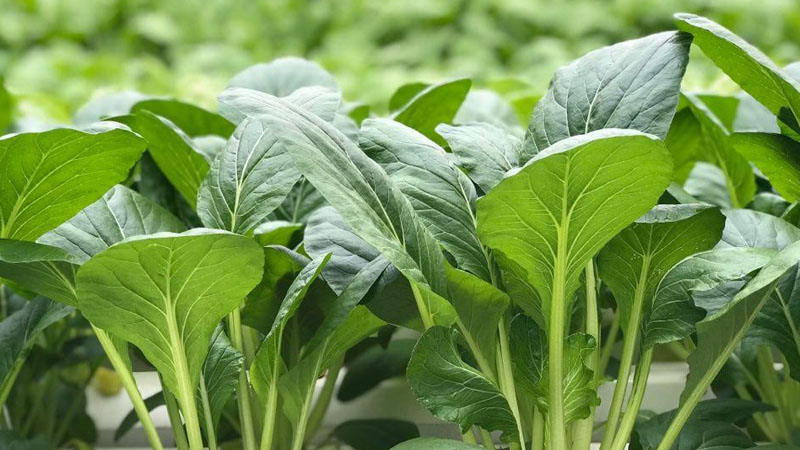 Fresh, undamaged leaves are a sign of quality
Fresh, undamaged leaves are a sign of quality
Check the Weight and Size
A fresh cải ngọt should feel heavy for its size. Avoid those that feel light for their size, as they may be old and dried out.
Examine the Roots
Fresh cải ngọt may or may not have roots, but the stem near the roots should be white or light green. Avoid those with rotten or blackened roots, as this indicates poor quality.
 Choose cải ngọt with fresh roots
Choose cải ngọt with fresh roots
Smell for Freshness
Fresh and chemical-free cải ngọt will have a pleasant aroma. When cooked, it should remain crisp and retain its natural flavor. If it tastes bland and becomes soft and mushy, it may have been treated with chemicals.
3. Important Notes When Consuming Cải Ngọt and Storage Tips
Who Should Avoid Cải Ngọt?
While cải ngọt offers numerous health benefits, there are a few individuals who should avoid or limit their consumption:
- People with Stomach Problems: Those with stomach issues may experience bloating and abdominal pain after consuming cải ngọt, especially when eaten raw.
- Individuals with Inflammatory Bowel Disease: Cải ngọt can irritate the digestive tract and trigger symptoms in those with inflammatory bowel disease.
- People with Kidney Stones: Cải ngọt contains high levels of oxalic acid, which can interfere with the absorption of zinc and calcium and is not recommended for those with kidney stones.
 Important considerations when consuming cải ngọt
Important considerations when consuming cải ngọt
It is recommended to wash cải ngọt thoroughly and soak it in salted water to remove any bacteria before cooking. Avoid eating it raw. Cooking methods such as boiling, stir-frying, or adding it to hot pot dishes are preferable.
Storage Tips for Cải Ngọt
To extend the shelf life of cải ngọt, store it in a ziplock bag or airtight container in the refrigerator, maintaining a temperature of 1-4°C. At this temperature, bacteria struggle to grow, keeping the vegetable fresh. Remember to remove any severely damaged or yellowed leaves before storing.
Avoid storing cải ngọt with ethylene-producing fruits and vegetables like tomatoes, apples, and bananas, as it is sensitive to ethylene and may spoil faster. Keep it separate from cooked foods to prevent bacterial contamination.
 Proper storage helps maintain the freshness of cải ngọt
Proper storage helps maintain the freshness of cải ngọt
4. Delicious Dishes Made with Cải Ngọt
1. Stir-Fried Cải Ngọt with Garlic
A simple and flavorful dish, stir-fried cải ngọt with garlic is easy to prepare. Simply sauté some garlic and then add the vegetable, cooking for 5-7 minutes. The result is a tasty side dish that pairs well with rice and other main courses.
 Stir-fried cải ngọt with garlic
Stir-fried cải ngọt with garlic
2. Cải Ngọt Stir-Fried with Shrimp
This dish combines the sweetness of shrimp with the freshness of cải ngọt. Sauté cleaned and shelled shrimp with cải ngọt until cooked, and then season to taste. The natural sweetness of the shrimp and the vegetable creates a mouthwatering dish.
 Cải ngọt stir-fried with shrimp
Cải ngọt stir-fried with shrimp
3. Noodle Stir-Fry with Cải Ngọt
To make your noodle stir-fry healthier, add some cải ngọt to the mix. Cut the vegetable into bite-sized pieces and stir-fry it with garlic, adding soy sauce and oyster sauce for flavor. You can also include meat for a more substantial dish.
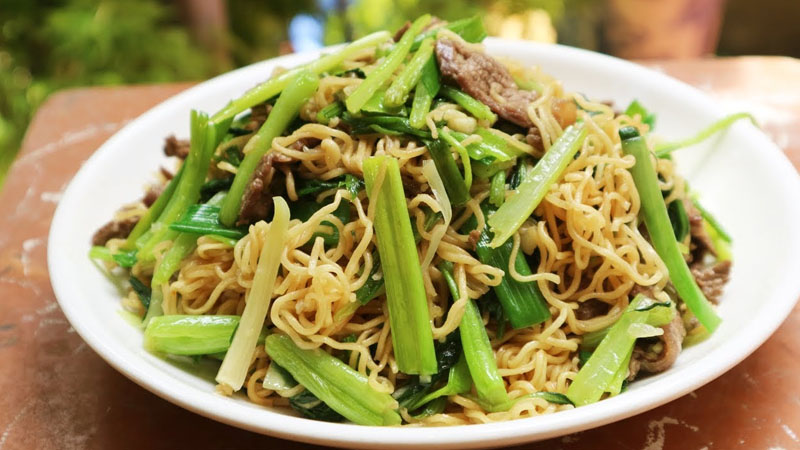 Noodle stir-fry with cải ngọt
Noodle stir-fry with cải ngọt
4. Vegetarian Cải Ngọt Soup
For vegetarians, a simple and nourishing soup can be made with cải ngọt, vegetarian spare ribs, mushrooms, and tofu. Remember not to overcook the vegetable to retain its crispness and nutritional value.
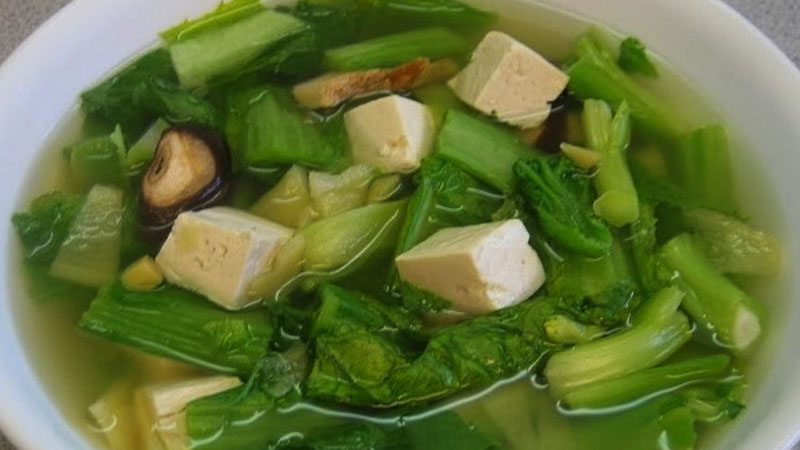 Vegetarian cải ngọt soup
Vegetarian cải ngọt soup
5. Cải Ngọt Stir-Fried with Mushrooms
Combining cải ngọt with mushrooms creates a delicious and healthy dish. The crispness of the vegetable pairs well with the softness of the mushrooms, and the dish absorbs the flavors of the seasonings beautifully.
 Cải ngọt stir-fried with mushrooms
Cải ngọt stir-fried with mushrooms
5. Buy Fresh and Affordable Cải Ngọt at Bách Hóa Xanh
At Bách Hóa Xanh, we offer fresh and high-quality cải ngọt at competitive prices. Our vegetables are sourced from 4K Farm, which prioritizes consumer health with its 4 NO principles. You can trust that our produce is fresh, traceable, affordable, and of the highest quality.
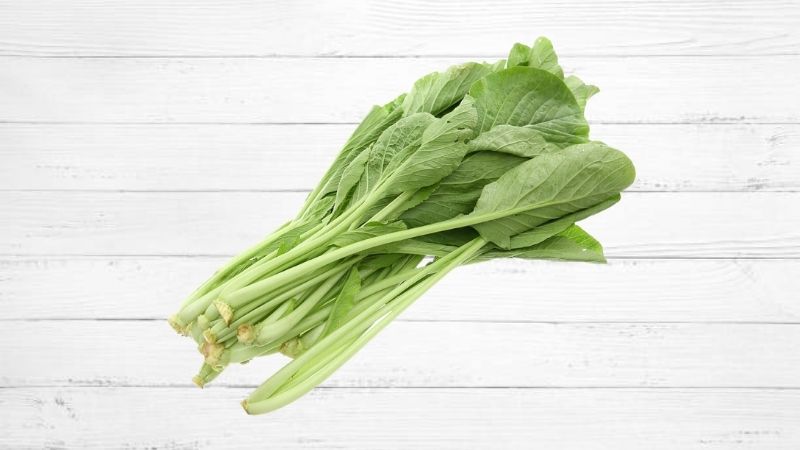 Buy fresh cải ngọt at Bách Hóa Xanh
Buy fresh cải ngọt at Bách Hóa Xanh
Our knowledgeable staff will gladly assist you in choosing the best produce, and we regularly offer promotions to make your shopping experience even more enjoyable.
With this guide, we hope you feel inspired to incorporate cải ngọt into your meals and take advantage of its nutritional benefits. Happy cooking!

























